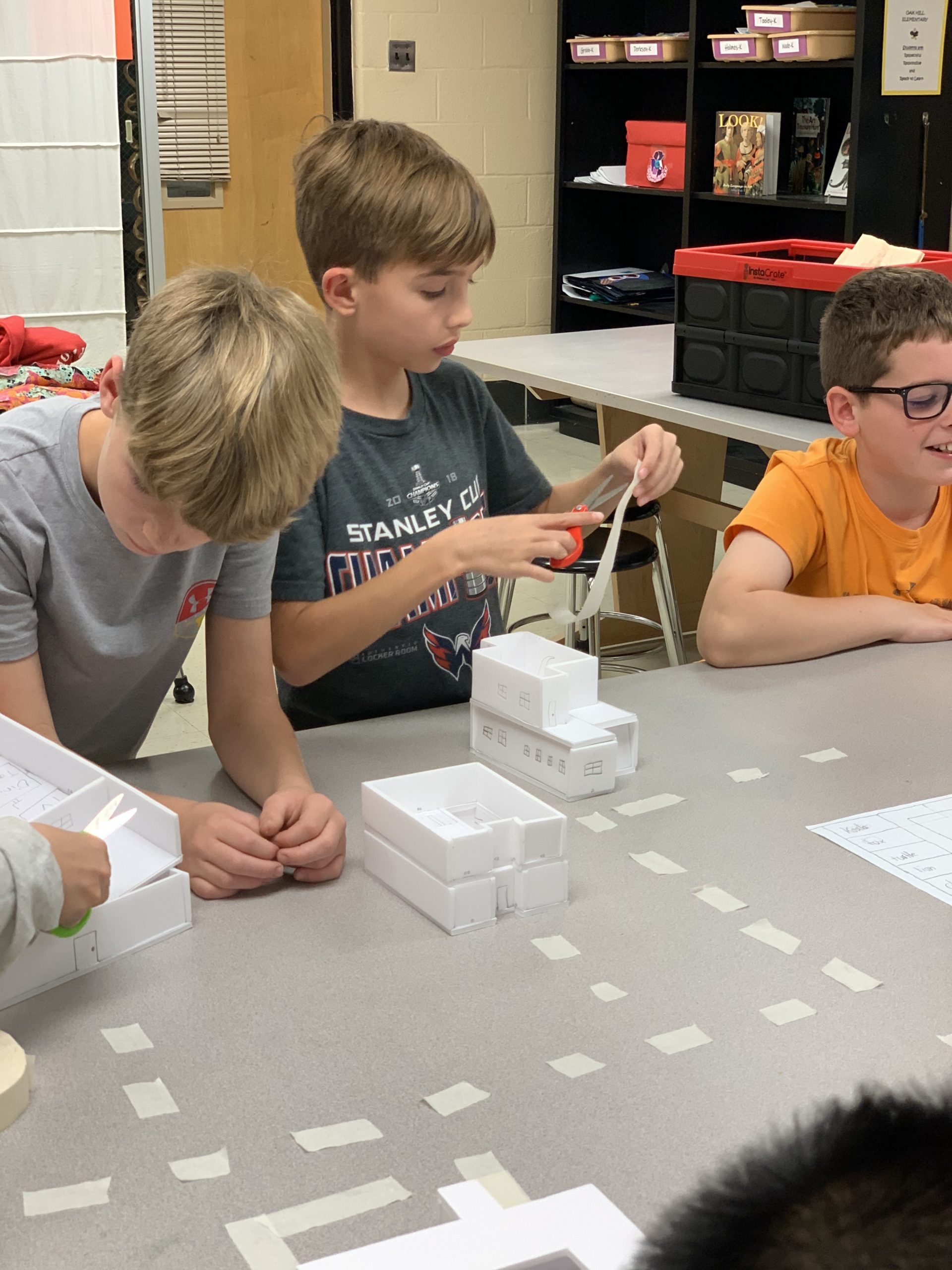
For the past two weeks, we have been adapting our bubble diagrams into floor plans. This is not an easy task – it requires us to really look at the size of our spaces and their relationships to each other.
We started by assigning dimensions, in feet, to each of our spaces, and writing them on the bubble diagrams. We are using the floor tiles again to visualize how big a space with be in real life. We look at the size on the floor and make a decision about the design. This is a great exercise for honing visual-spatial skills.

Using graph paper, we then started drawing our floor plans, making sure to account for circulation, doors, and windows. Over the next two weeks, I will be cutting out the components for our models, and we will begin assembling our buildings in week 7!
I am so proud of how far the kids have come! They are going to love seeing their city come together!













